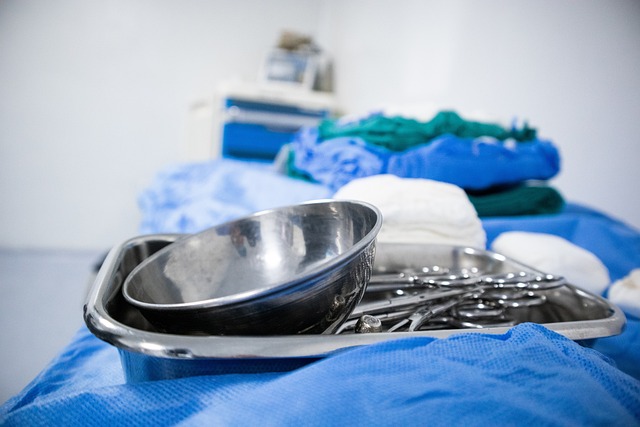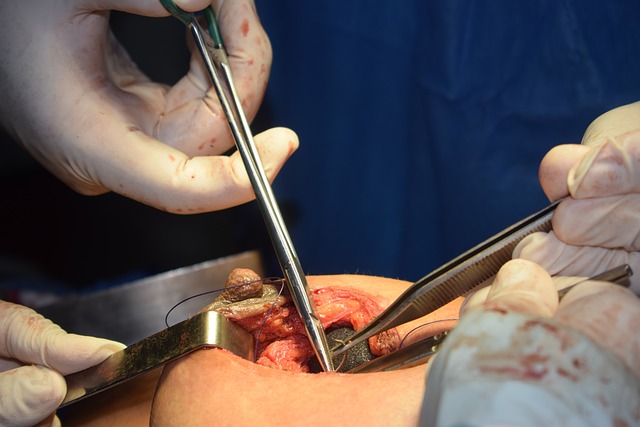Translation services for surgical procedure instructions in the UK must strictly adhere to local standards and regulations, prioritizing patient safety and clear communication. Professional medical translators with healthcare expertise are crucial for accurately conveying complex medical information while maintaining readability. Consistency in formatting, adherence to UK language guidelines, and feedback from medical professionals are key to high-quality translations. Reputable services follow a multi-step process involving expert reviews and quality control measures to meet stringent UK healthcare standards, ensuring safe and accessible instructions for diverse patient populations.
Are your translated surgical procedure instructions meeting UK healthcare standards? In today’s globalised medical landscape, accurate translation services are vital for safe and effective patient care. This article explores key considerations for ensuring quality in translated surgical documentation, from understanding stringent UK healthcare standards to best practices for verifying accuracy. Discover how expert translation services can enhance patient safety and streamline medical communication within the UK healthcare system.
- Understanding UK Healthcare Standards for Surgical Procedure Instructions
- The Role of Accurate Translation in Medical Communication
- Key Considerations when Using Translation Services for Healthcare
- Ensuring Quality and Consistency in Translated Surgical Documentation
- Best Practices to Verify the Accuracy of Translated Procedures
Understanding UK Healthcare Standards for Surgical Procedure Instructions

When translating surgical procedure instructions for a UK healthcare setting, it’s crucial to have a deep understanding of local standards and regulations. The UK has stringent requirements for medical documentation to ensure patient safety and effective communication among healthcare professionals. These standards cover various aspects, from language clarity and consistency to adherence to specific formatting guidelines.
Translation services for surgical procedure instructions must be tailored to meet these high standards. This involves not just translating words but ensuring the translated text accurately conveys complex medical information while maintaining readability. Professionals providing these translation services should have expertise in both healthcare terminology and cultural nuances to bridge any potential communication gaps, thereby enhancing patient care and outcomes.
The Role of Accurate Translation in Medical Communication

In the healthcare sector, effective communication is paramount, especially when sharing complex medical information across languages. The role of accurate translation services for surgical procedure instructions in the UK cannot be overstated. When translating medical content, precision is key to ensuring patient safety and understanding. Inaccurate or poorly translated documentation can lead to misunderstandings, misdiagnoses, or even harmful procedures. Therefore, professional medical translators are essential to bridge this communication gap.
Translation services for surgical procedure instructions must consider not just the linguistic aspects but also cultural nuances. They play a vital role in ensuring that medical knowledge is conveyed accurately and sensitively, catering to diverse patient populations within the UK. Moreover, with the increasing globalisation of healthcare, these services enable healthcare providers to offer high-quality care to an increasingly multicultural community, upholding UK healthcare standards worldwide.
Key Considerations when Using Translation Services for Healthcare

When utilising translation services for surgical procedure instructions in the UK, several key considerations come into play to ensure compliance with healthcare standards. The accuracy and cultural suitability of translations are paramount; medical terminology must be conveyed precisely to avoid any potential risks to patient safety. A professional service should employ medical specialists or linguists with expertise in healthcare to guarantee an understanding of nuanced concepts.
Additionally, consistency in formatting and style is essential for clear communication. Translation services should adhere to UK guidelines on language use, including grammar, syntax, and colloquialisms, to make the instructions relatable yet precise. Validating translations against original sources and seeking feedback from medical professionals are effective ways to maintain quality and identify any potential ambiguities or errors early in the process.
Ensuring Quality and Consistency in Translated Surgical Documentation

Ensuring quality and consistency in translated surgical documentation is paramount when providing healthcare services in the UK, where precision and adherence to standards are non-negotiable. Medical translations must convey complex procedures accurately, minimizing ambiguity or potential harm. Reputable translation services for surgical procedure instructions in the UK employ professional medical translators who understand both the language and medical terminology nuances.
Consistency is vital; translated documents should maintain the same level of detail and clarity as their original counterparts. Using standardized terminology and following specific formatting guidelines help guarantee uniformity across all translations. This meticulous approach ensures patients receive clear, accurate instructions, regardless of their linguistic background, thereby enhancing safety and patient satisfaction in UK healthcare settings.
Best Practices to Verify the Accuracy of Translated Procedures

When it comes to ensuring the accuracy of translated surgical procedure instructions in the UK, adherence to best practices is paramount. Translation services for surgical procedure instructions must employ a rigorous quality assurance process to meet healthcare standards. This includes engaging professional medical translators who are fluent in both the source and target languages, with proven expertise in medical terminology.
Verification should encompass multiple stages: proofreading by expert linguists, review by medical professionals to confirm clinical accuracy, and conformity with UK healthcare regulations. Utilizing advanced translation software and term bases can also enhance consistency and reduce potential errors. Regular quality control measures, feedback mechanisms, and continuous improvement processes are essential to guarantee that translated procedures not only convey the intended message but also meet the stringent requirements of the UK healthcare sector.
When translating surgical procedure instructions for the UK healthcare sector, adhering to stringent standards is vital. Translation services that specialise in medical documentation play a crucial role in ensuring accurate communication and patient safety. By following best practices, including thorough verification and quality control, these services can deliver high-quality translated materials that meet UK healthcare standards. This process is essential to avoid potential risks and ensure consistent care for patients across diverse linguistic backgrounds.
